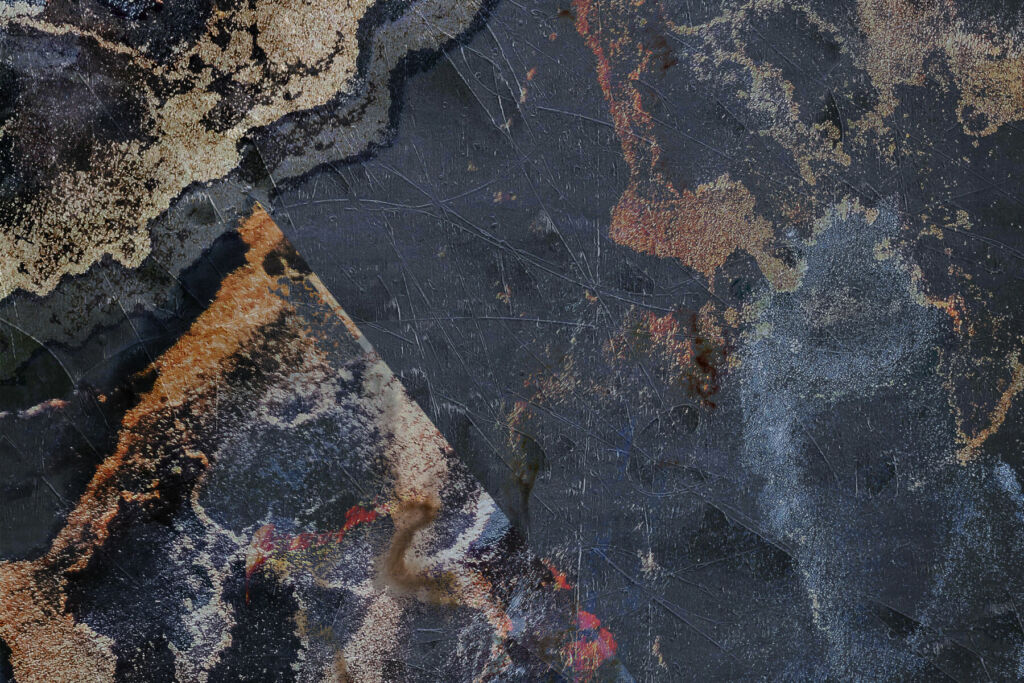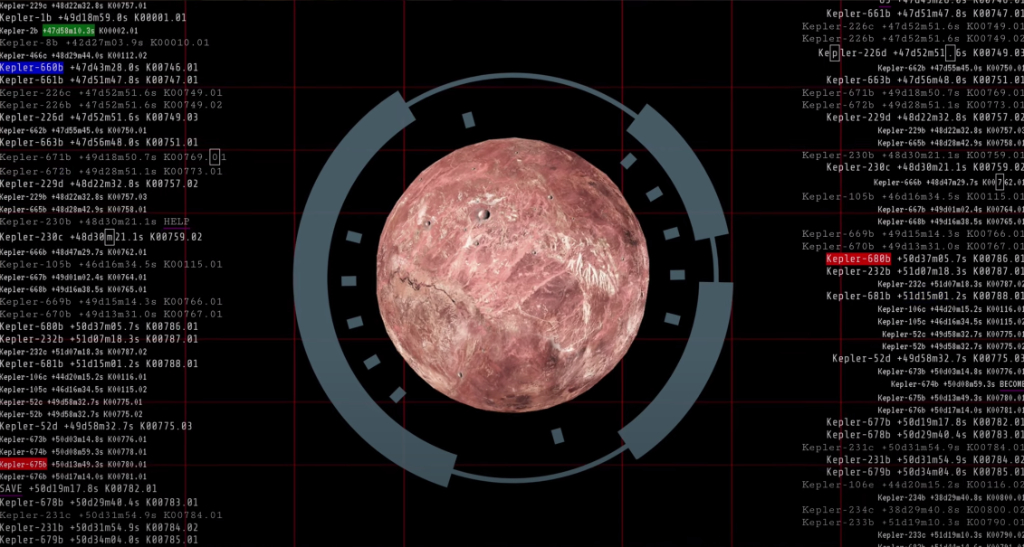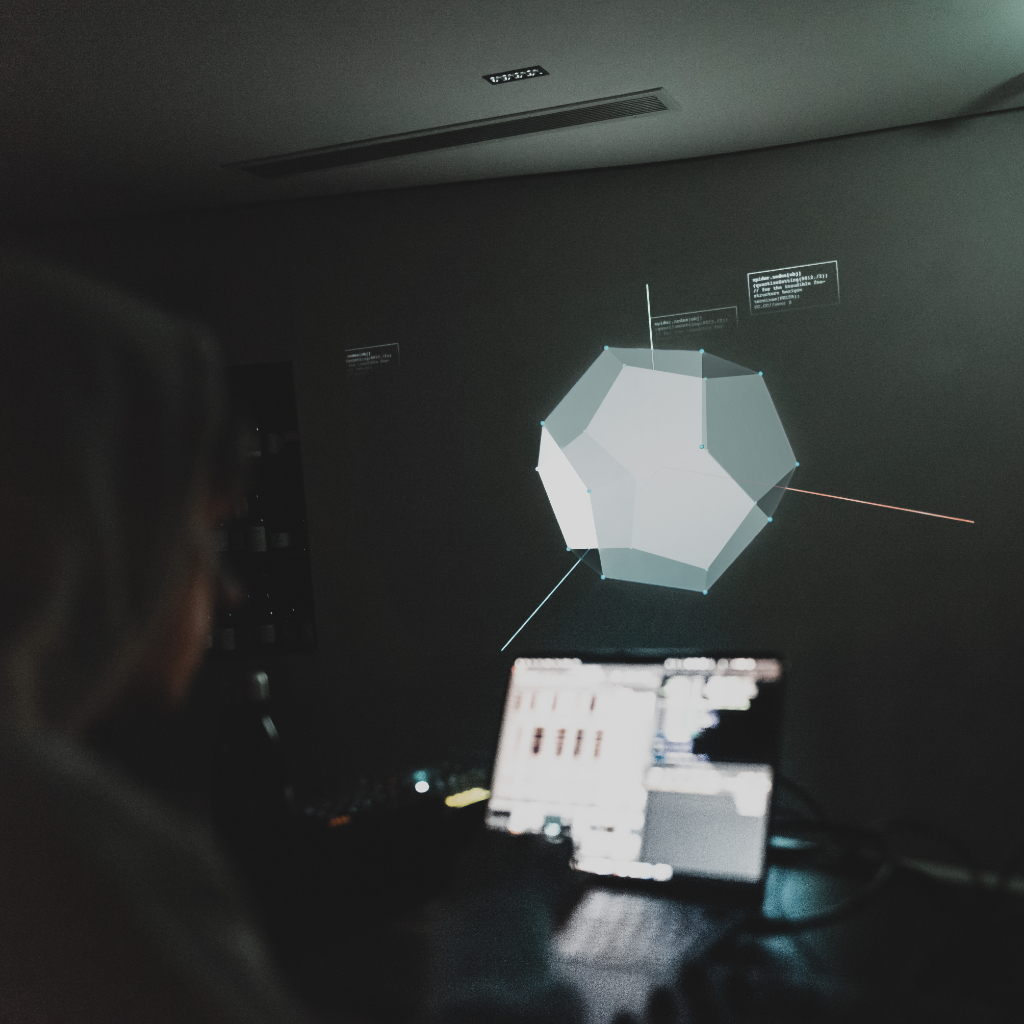Text by Alifiyah Imani

Technology, art, and music are all intertwined in Aagentah’s practice, and he has a particular interest in moving towards live performance settings and experimenting with the possibilities of audio-reactive visualisations through data exploration, physical devices, and creative programming. The result is complex and abstract, where Aagentah can manipulate real-time data to activate audio parameters and visual production. His projects give a more nuanced understanding of tools and creative curiosity when humans and machines collide, especially regarding the significance and potential of artists working with developing technologies and drawing from different disciplines and backgrounds.
In the web-based, interactive, atmospheric pad synthesiser asteroidblock.io (2022) project, Aagentah uses real-time proximity data to control the synth’s initial parameters while requesting information from NASA’s asteroid API. The project is entirely composed of Javascript and only functions within a browser. Real known asteroids are fetched, and the data is then used to set up some starting settings.
Another conceptual object he built is the IND7_HELM (2023). Designed as a set piece for an indie science fiction film being shot in Manchester, Aagentah handcrafted an audio-responsive DJ helmet compatible with Ableton. The helmet transmits the DJ’s musical notes to an Arduino Uno board, acting as a MIDI device. Every MIDI note has a designation for a corresponding instrument, and the Arduino uses that information to determine which digits to display on the seven-segment display. I’m still an absolute beginner here, but I’ve been enjoying learning electronics from the ground up. There’s something relaxing about electronics—whether it’s soldering or tinkering, it’s been a fun skill to develop, says Aagentah.



His most recent endeavour is a Javascript object-driven pattern library he calls [_new world]. With plans to create an entirely reactive physical exhibit in the next few months, he describes his AV and coding approaches as a typical route that people tend to choose here are proprietary services such as Vuo, Resolume, or Touch Designer—or if you’re going into coding, something like Processing or P5.js. I’ve been writing a few set programming languages for nearly a decade, so when approaching this stuff, I found I could utilise my current skills to do AV in a bespoke manner.
Visuals that react to audio are shown in the browser using real-time MIDI data. This MIDI data is sent to the local host session, which uses it to generate the active modules and on-screen animations using parameters like channel, note velocity, and note length. With the aid of the pattern library, Aagentah can create independent modules that work with all front-end tools and libraries and permit method manipulation by the project’s wrapping API.
A module can be anything from complex libraries such as Three.js, P5, or D3 to simple PNG structures with some CSS animations. When these components are integrated during a live performance, things get exciting for Aagentah. I recently hosted an AV exhibition here in Manchester. It was my first time doing this, and I wanted to see if I could take my initial draft of [_new world] and turn it into a performance. After expressing myself solely in audio for so long, I found myself wanting to get into visuals. Writing this pattern library has been a great way of bringing my world as a musician and programmer together. I’ve been using this project in some live performances and typically hook up some MIDI parameters to an MPC controller to play around with in real-time. It’s been a lot of fun. Aagentah tells CLOT.
While mastering and developing a technical skill set is necessary for new media art forms like Aagentah’s work, he advises artists and developers to focus less on tools and more on curiosity. It’s fun to obsess over technical stuff, but don’t let it consume your vision. I’ve spent many hours developing [_new world], but I’m also prepared to drop it in a heartbeat if it means improving and staying true to my vocation. Aagentah ends this conversation.






